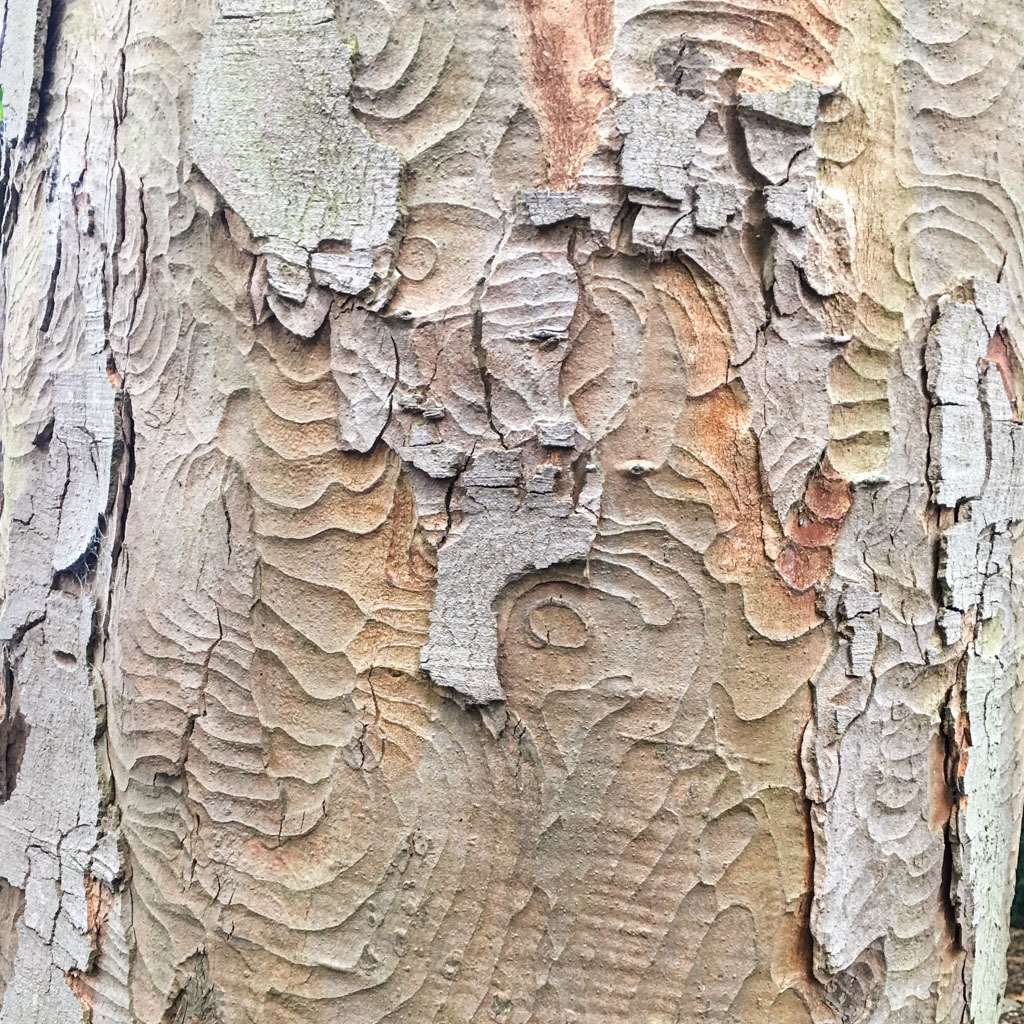I think this is a sycamore tree – I was far more interested in these patterns on the trunk to notice its leaves!
Apparently this swirling and whorling occurs in sycamores and other members of the maple family and results in a highly sought after timber that’s quite often used in stringed instruments. I always wondered about the different wood patterns in violins and guitars – now I know! The timber is pale, with a fine texture and good for furniture, wood turning, whittling, parquetry, flooring; it doesn’t taint with food so good for spoons, rolling pins, plates, bowls and love spoons; it’s a good fuel timber and is easy to split with an axe.
Sycamores are a hardwood tree, so big, slow growing and long lived. They’re very tolerant of air pollution, so good as a street tree, and they’re wind tolerant too – hence why you find so many of them in coastal areas like Pembrokeshire, where they were planted as windbreaks. Honeybees love them as they’re a good source of pollen and they can be tapped in spring for syrup – like their cousin, the sugar maple. And, they appear in the folklore of many cultures, generally seen to symbolise strength, longevity and beauty.

